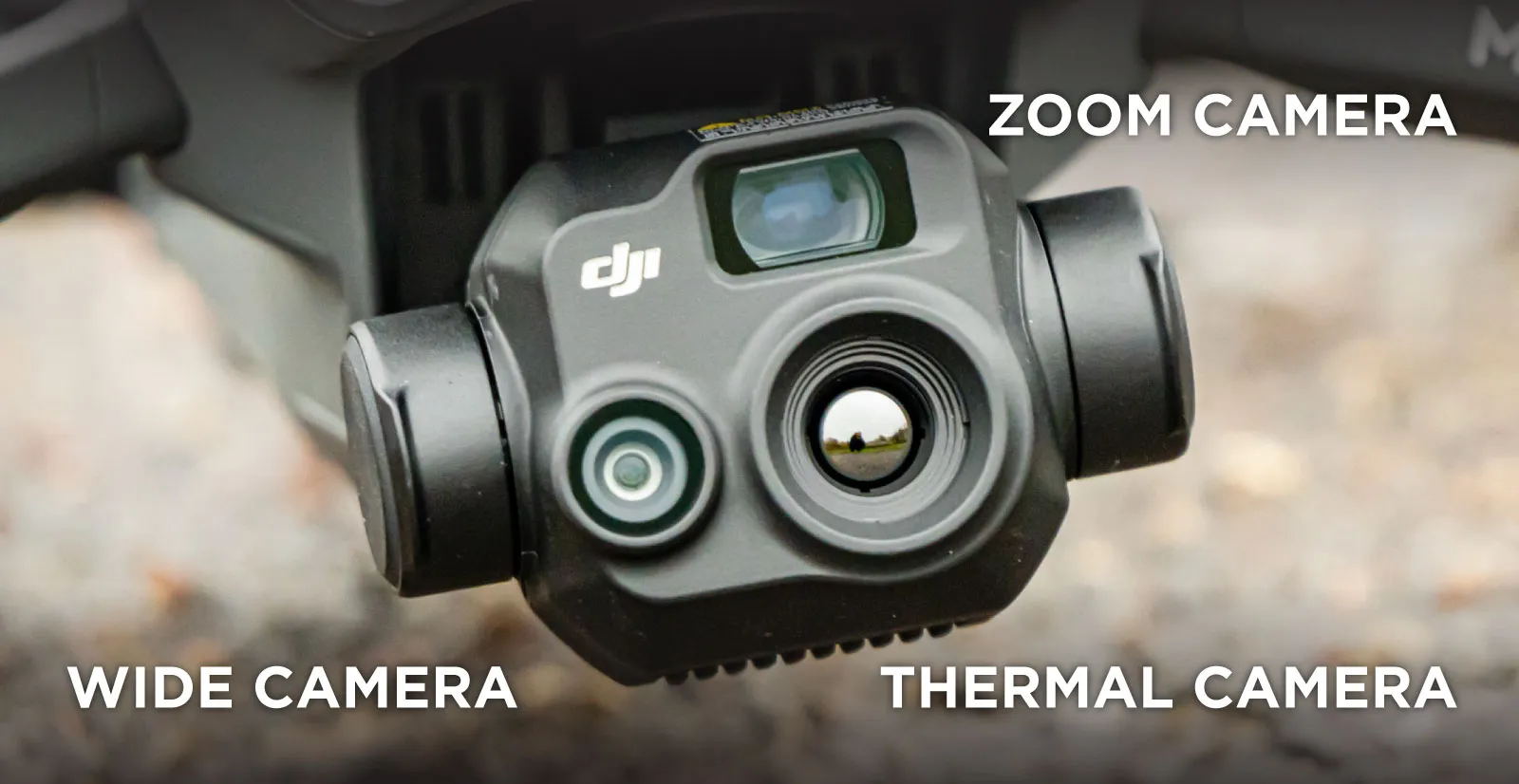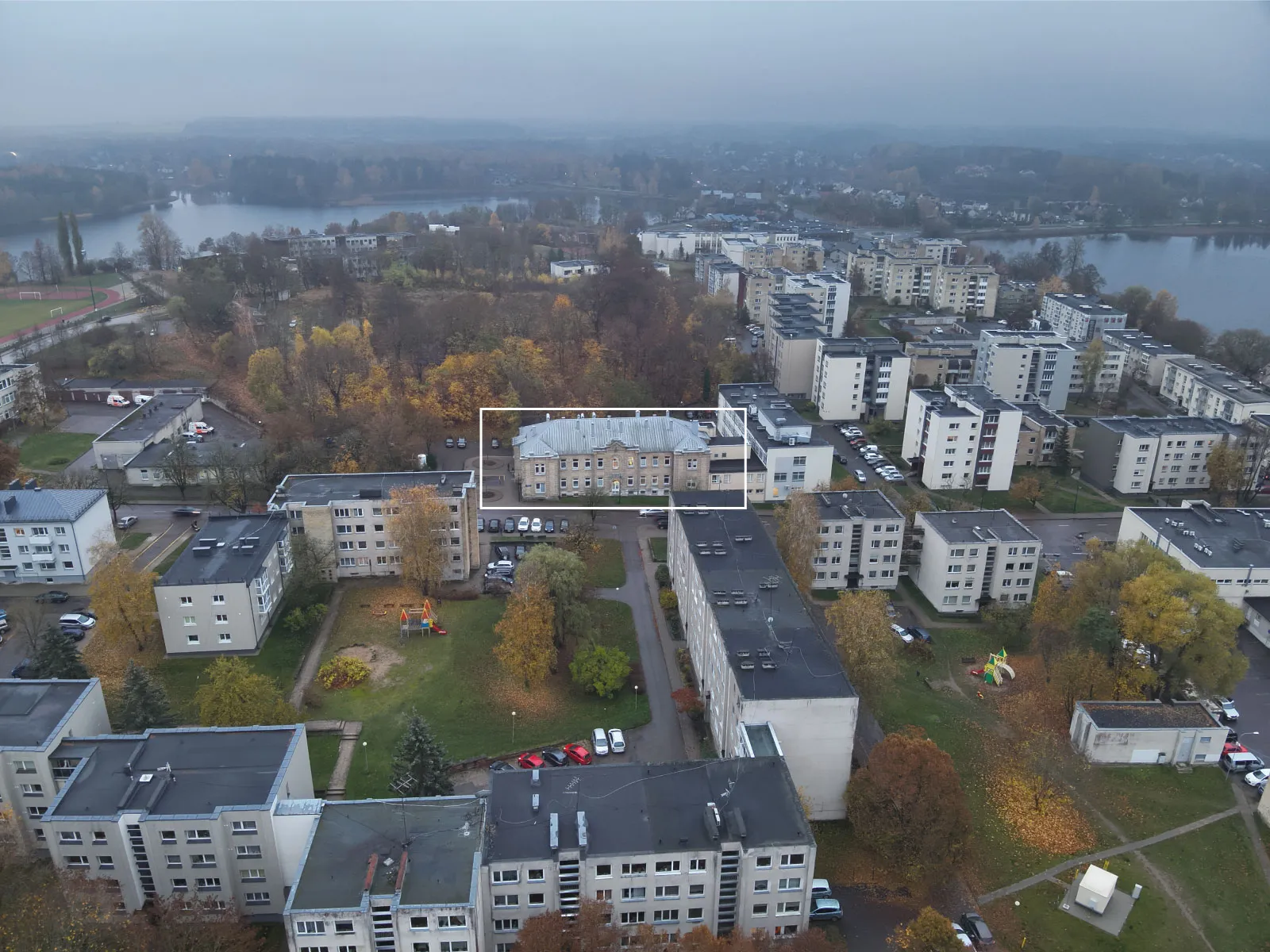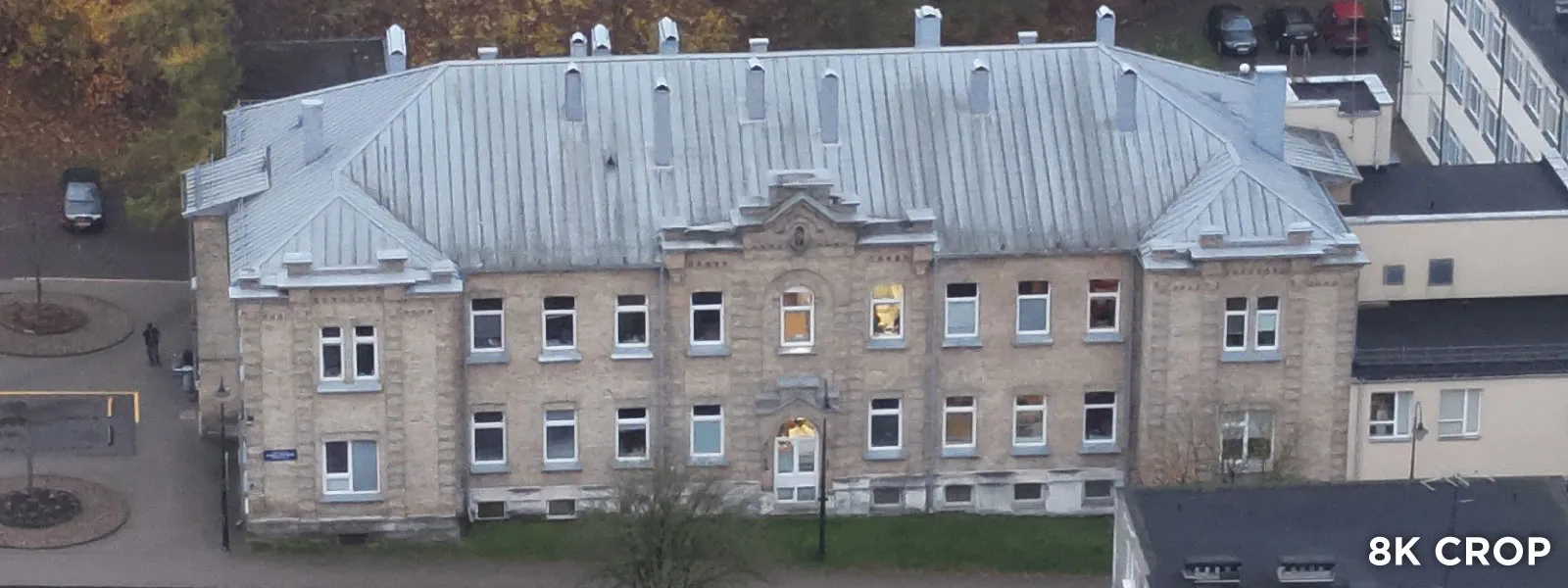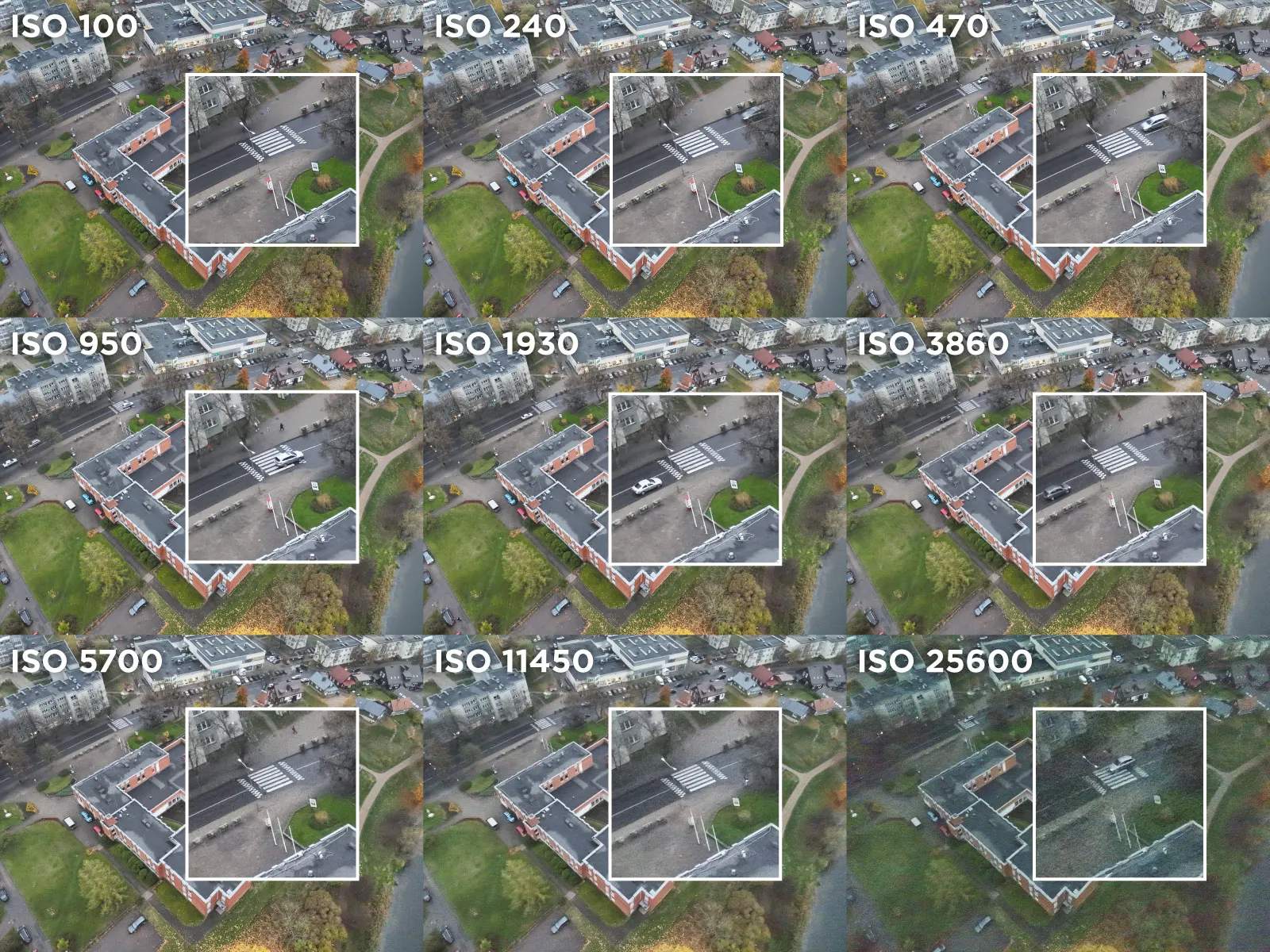DJI Mavic 3T Camera Tested
 Lukas
Zmejevskis
Lukas
Zmejevskis
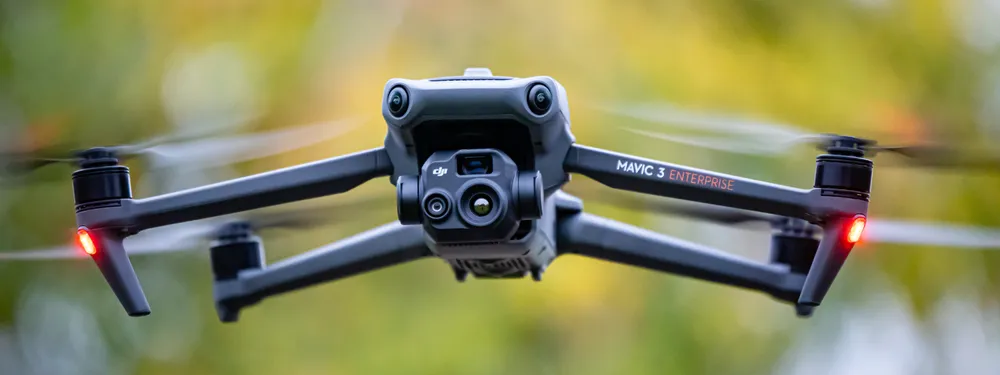
Mavic 3T is a compact enterprise drone from DJI which contains a thermal imager. We have procured one to test out its image quality and capabilities. This short review will heavily depend on our previous article about the DJI Mavic 3E because the only difference between these drones is the camera payload. Here is our unbiased opinion after a week of testing the drone.
Vs. The Mavic 3 / 3E
Physically the drone is the same as the Mavic 3E, which is almost the same as the consumer-grade Mavic 3. The flight experience and accessories are also the same. DJI Pilot 2 app is essentially identical as well. It only has some UI differences related to the different cameras. Based on this, we highly recommend checking out our previous article on the DJI Mavic 3E, as we will focus only on the payload differences in this article.
For those who have read the article, here is a quick reminder:
- The enterprise drones have slightly different propellers and camera guards.
- RTK module mounting points and a beacon on the top of the drone are the only physical differences on the body.
- The drone comes with a hard case, and the remote controller is the DJI RC Pro Enterprise, which is just a DJI RC Pro with the DJI Pilot 2 app installed.
- Enterprise drones come with a 100-watt charging brick and use the same 77 Wh batteries.
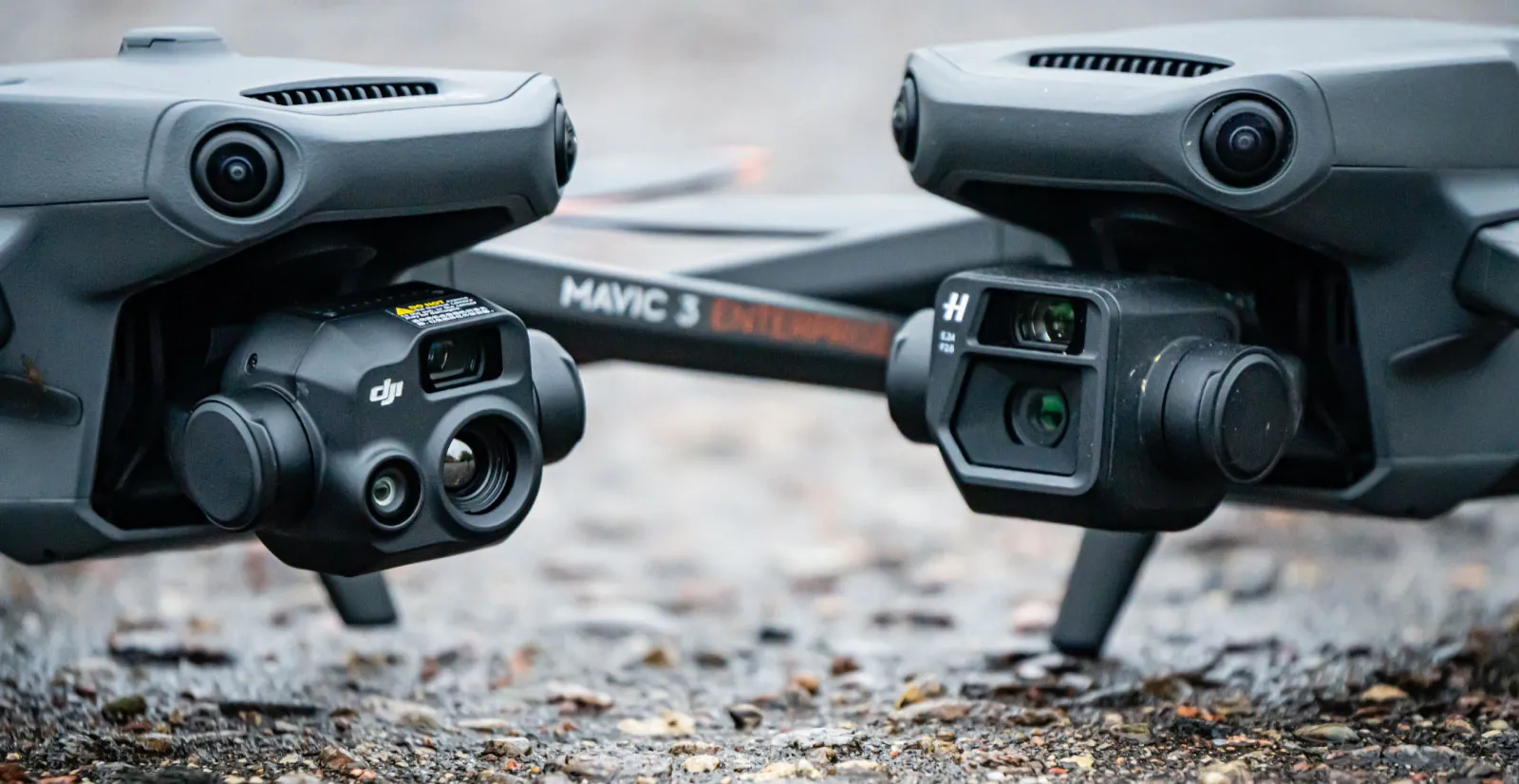 DJI Mavic 3T Cameras
DJI Mavic 3T Cameras
DJI Mavic 3T is for those who need a thermal imager. It still has wide and tele RGB cameras, making it a complete package, at least on paper.
| ITEM | MAVIC 3T | MAVIC 3E | MAVIC 3 |
| GIMBAL | 3-AXIS TILT, ROLL, PAN | 3-AXIS TILT, ROLL, PAN | 3-AXIS TILT, ROLL, PAN |
| WIDE CAMERA | 84° FOV F2.8 LENS, 1/2 -INCH 48 MP QUAD BAYER SENSOR | 84° FOV F2.8 LENS, M4/3 20 MP SENSOR | 84° FOV F2.8 LENS, M4/3 20 MP SENSOR |
| TELE CAMERA | 15° FOV F4.4 LENS, 1/2 -INCH 12 MP SENSOR | 15° FOV F4.4 LENS, 1/2 -INCH 12 MP SENSOR | 15° FOV F4.4 LENS, 1/2 -INCH 12 MP SENSOR |
| SHUTTER | ELECTRONIC ONLY | MECHANICAL AND ELECTRONIC (WIDE CAMERA) | ELECTRONIC ONLY |
| ISO RANGE | 100-25600 | 100-6400 | 100-6400 |
| THERMAL CAMERA | YES | NO | NO |
Tele Camera
The telephoto camera is the same 7x shooter between all three drones. Any differences that we can find are in the software. The consumer Mavic 3 can shoot a few different video modes and provide RAW images, while the enterprise drones can not. The Mavic 3T also has a broader ISO range, which means its cameras get more sensitive at the cost of image quality.
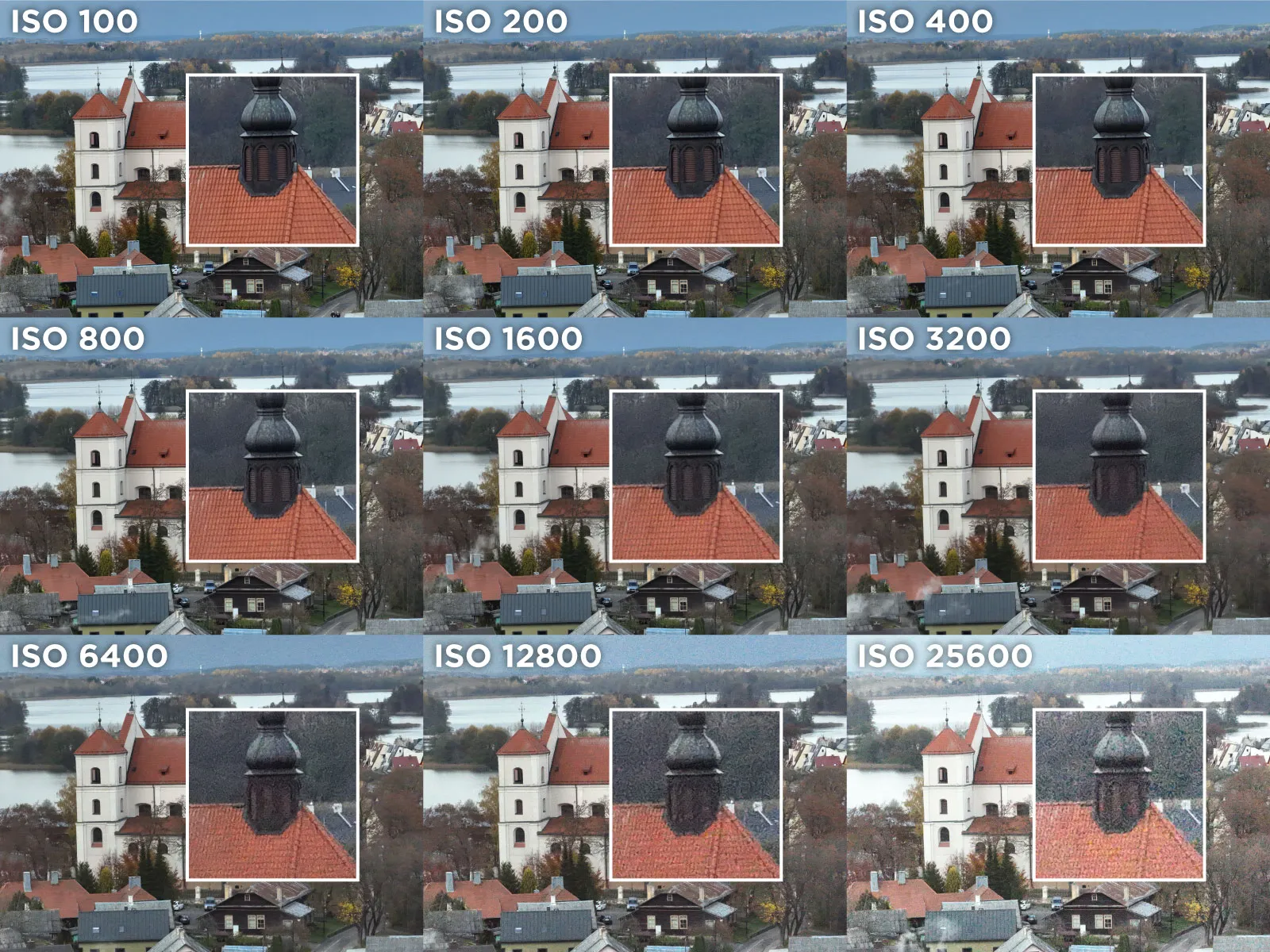 Enterprise drones also offer ridiculous amounts of digital zoom that may be usable in inspection or search and rescue scenarios.
Enterprise drones also offer ridiculous amounts of digital zoom that may be usable in inspection or search and rescue scenarios.
 Wide camera
Wide camera
The DJI Mavic 3T has a smaller sensor in its wide camera which means it provides a lesser image quality than the 3E or regular Mavic. Despite what one may think upon reading the spec sheet, the Mavic 3E and Mavic 3 wide cameras are far superior with their larger sensors. 48-megapixel or “8K” marketing fails to mention that the sensor has a quad-bayer pixel arrangement, meaning the effective resolution is 12 megapixels.
This camera also has a broader ISO range than the other drones at the cost of image quality. No RAW image capture is available yet.
Thermal Camera
The thermal imager is an industry-standard uncooled microbolometer with a 640×512 resolution sensor. The lens is a little zoomed in. It is approximately 2x zoom compared to the wide-angle camera. DJI claims its measurement accuracy as “±2°C or ±2%,” whichever value is higher, and it has two gain modes: from -20° to 150°C and from 0° to 500°C. These are the two operating temperature ranges of the camera.

The thermal camera can shoot either JPEG photos or video at 30 fps. In the specs, DJI claims it also supports R-JPEG 16-bit image format, but the app has no such option. We hope this will come with a firmware update soon.
Vs. The Matrice M30T
The thermal camera seems to be the same as in the sizable and more expensive DJI Matrice M30T. The Matrice drone offers an arbitrary “super-resolution mode” that enlarges thermal images to 1280×1024 dimensions. It is purely a marketing gimmick and does not provide more quality. Useful differentiating features are hot-swappable batteries, IP rating, and extremely powerful zoom. For those who do not need these extra features that the M30T has, the Mavic 3T becomes a good value from the thermal imaging standpoint.

Electronic Shutter
The wide camera on the DJI Mavic 3T relies on an electronic shutter only. It is less usable for photogrammetry, as it can introduce rolling shutter effects, which distort images and reduce the quality of 3D scans. We measured the sensor readout speed to be approximately 16 milliseconds, which is on par with the Mavic 3 and other small modern sensors. The DJI Pilot App allows you to execute flight plans at very high speeds, which can cause the rolling shutter effect. Be wary of this, and do not execute high-speed scans at low altitudes even if the camera shutter speed is high.
DJI Mavic 3T
DJI Pilot 2 app is the same for Mavic 3E and 3T. Both drones have access to the same flight plans, as demonstrated in our Mavic 3E blog post. The main difference is that the Mavic 3T will provide a slightly lesser quality at slower speeds. But it can take thermal photos simultaneously, allowing you to create thermal 3D models. Thermal 3D reconstruction is more challenging and will require even more care. But it is possible and provides clear benefits in specific use cases.

DJI Mavic 3T Use cases
The DJI Mavic 3E is for photogrammetry. Its twin brother with a different camera can also do photogrammetry but having a thermal imager opens up many more use cases. It is unsuitable for search and rescue because it has no IP rating like the M30T. If you need to find someone, you must do it even if there is a drizzle. But this drone is almost as good as any other UAV available today for infrared and RGB inspection.
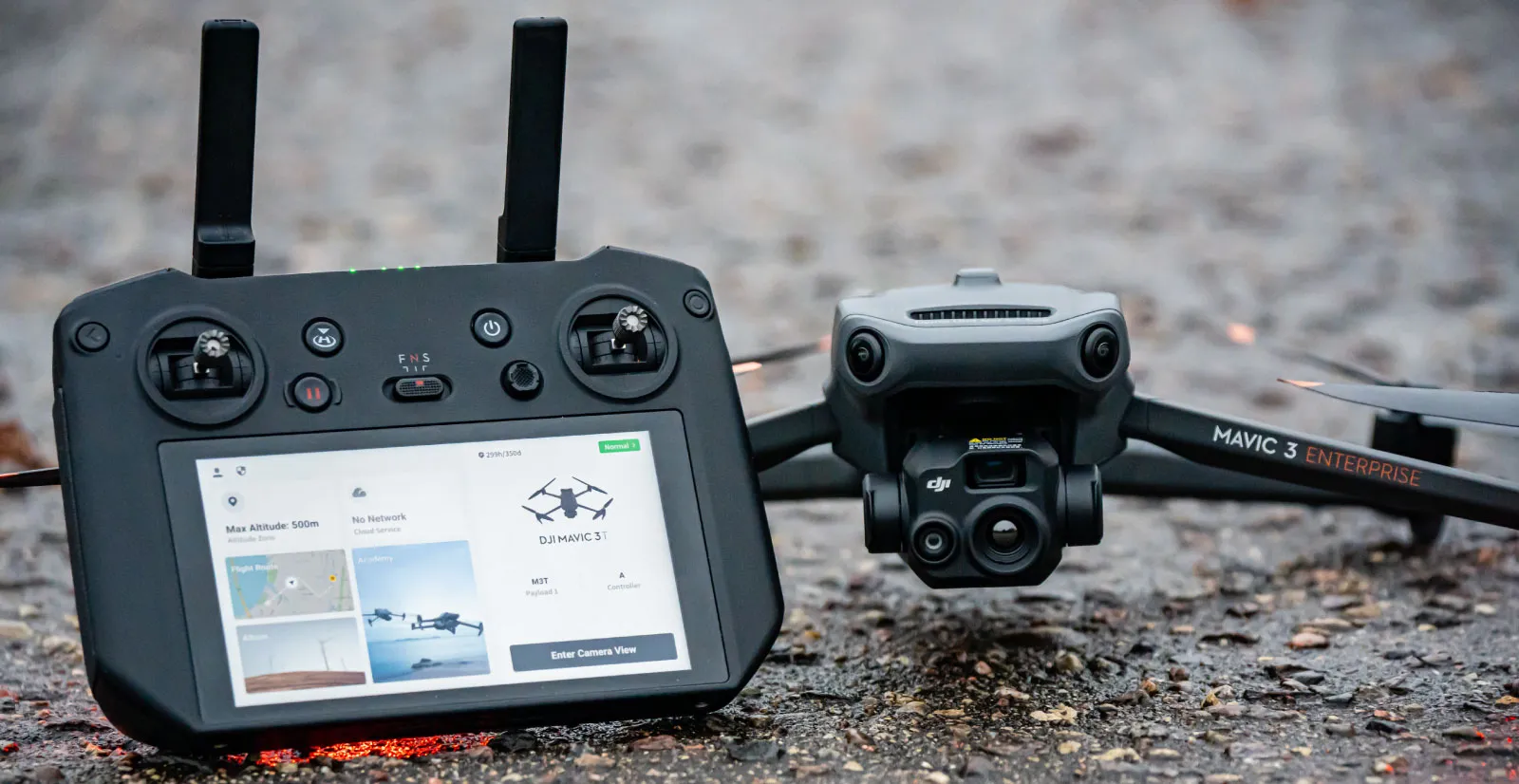 Conclusion
Conclusion
DJI Mavic 3T is a small foldable drone with three different cameras. It is undoubtedly a powerful tool in the right hands. While the Mavic 3E felt like a blatant cash grab compared to the regular Mavic 3, this feels more like a genuine product. Its main selling point is the thermal camera in the sky, which provides a different perspective in many use cases. And due to having two more RGB cameras, it still retains quite a bit of regular photogrammetry and inspection functionality. Now we need software updates from DJI or third-party developers to increase the usability of DJI Mavic 3T even more.

Photographer - Drone Pilot - Photogrammetrist. Years of experience in gathering data for photogrammetry projects, client support and consultations, software testing, and working with development and marketing teams. Feel free to contact me via Pixpro Discord or email (l.zmejevskis@pix-pro.com) if you have any questions about our blog.
Related Blog Posts
Our Related Posts
All of our tools and technologies are designed, modified and updated keeping your needs in mind

No. 1 Mistake You Are Making in Photogrammetry Right Now
As photogrammetry software developers, we need to troubleshoot multiple projects from our clients every week. The number one mistake, especially when making measuring projects, is using redundant photos. These photos can appear for a few reasons, which I will describe, and they can be quickly dealt
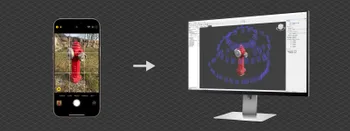
Classic Photogrammetry with an iPhone
Photogrammetric 3D scanning can turn a bunch of regular photos into a 3D model or a scene. So, we only need a camera and some knowledge of how to take photos. In the previous article, we tested the latest iPhone camera with a few different apps.
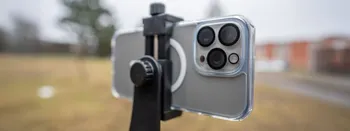
Manual Photography with iPhone 16 Pro Max - Android/Windows User Perspective
Adage as old as touchscreens on portable devices tells us that the best camera is the one you have. We have the luxury of having cameras everywhere we go because we are dependent and addicted to smartphones.
Ready to get started with your project?
You can choose from our three different plans or ask for a custom solution where you can process as many photos as you like!
Free 14-day trial. Cancel any time.
.svg@webp)
